Roland Garros and the Auteuil Greenhouses
Plants from four continents surrounding the Simonne Mathieu tennis court (C) Amy Kupec-Larue Contrary to the peaceful beauty that normally reigns here, this contemporary greenhouse was at the heart of a prolonged and heated preservation battle. While the central, 19th-century greenhouses are protected as historical monuments, several smaller, recent greenhouses were knocked down to make room for the extension of the Roland Garros tennis site. A brilliant compromise was finally reached with the creation of a contemporary greenhouse surrounding the 5000-seat tennis court. The new glass structure was designed to harmonize with the older greenhouses and the tennis court is semi-sunken, allowing its height to be proportional to the older, central palmarium. The tennis court is used by Roland Garros for two months every year during the French Open, and the greenhouses are open to the public for the remaining 10 months of the year.
Simonne Mathieu in 1926 (C) Agence Meurisse, Public Domain The court’s namesake, Simonne Mathieu, is an important yet forgotten figure of women’s tennis who won 13 Grand Slam titles throughout her international career. She was born in Neuilly-sur-Seine in 1908 and began playing tennis as a teenager. Thanks to her formidable forehand and incredible determination, she began winning tournaments and debuted at Roland Garros in 1925. Despite reaching the finals on six different occasions, it wasn’t until 1938, having had two children, that she finally and remarkably won the women’s singles, the women’s doubles and the mixed doubles tournaments in the same year!
When the Second World War interrupted her tennis career, she began her military career, joining the Resistance alongside General de Gaulle in London and commanding one of the first women’s auxiliary units. Upon her return to France in 1944, she had risen to the grade of captain in the Free French Forces and proudly worn her uniform while umpiring matches held at Roland Garros that year. After receiving the Légion d’Honneur and retiring from competitive tennis, her passion and dedication to this sport did not cease. She was the captain of the French Women’s tennis team for 12 years as well as working in the Committees Branch of the French Tennis Federation. Her nephew and great-grandson were present at the opening match in 2019 alongside the Mayor of Paris Anne Hidalgo and the former President of France Nicloas Sarkozy.
The contemporary greenhouses at the Porte d’Auteuil are teeming with chlorophyll-filled treasures … and a sizable surprise!
The greenhouses of Auteuil are one of four locations of the acclaimed Botanical Garden of Paris. Its name in French, Les Serres d’Auteuil, comes from the verb serrer, which means to squeeze, as tender plants were often “squeezed” into greenhouses or conservatories for safekeeping during the cold winter months. Originally these greenhouses were built to grow and propagate the many plants and flowers needed to decorate the city’s burgeoning public gardens in the late 19th century as well as acclimate and display tropical species from around the world. A third of its surface was amputated when the ring road, or péripherique, was created in the 1960s; the production of plants was then transferred to a location south of Paris. The most recent transformation to this charming botanical site on the cusp of the 16th district is a modern greenhouse… with a tennis court at its center!
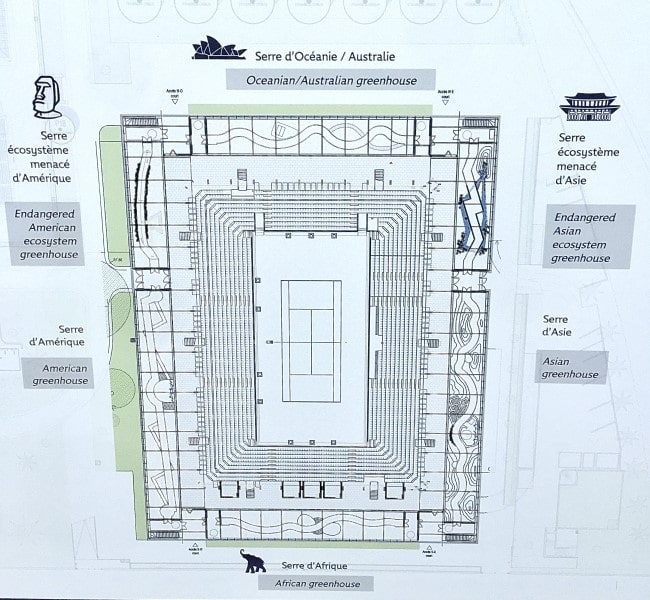
Plants from four continents surrounding the Simonne Mathieu tennis court (C) Amy Kupec-Larue
Contrary to the peaceful beauty that normally reigns here, this contemporary greenhouse was at the heart of a prolonged and heated preservation battle. While the central, 19th-century greenhouses are protected as historical monuments, several smaller, recent greenhouses were knocked down to make room for the extension of the Roland Garros tennis site. A brilliant compromise was finally reached with the creation of a contemporary greenhouse surrounding the 5000-seat tennis court. The new glass structure was designed to harmonize with the older greenhouses and the tennis court is semi-sunken, allowing its height to be proportional to the older, central palmarium. The tennis court is used by Roland Garros for two months every year during the French Open, and the greenhouses are open to the public for the remaining 10 months of the year.
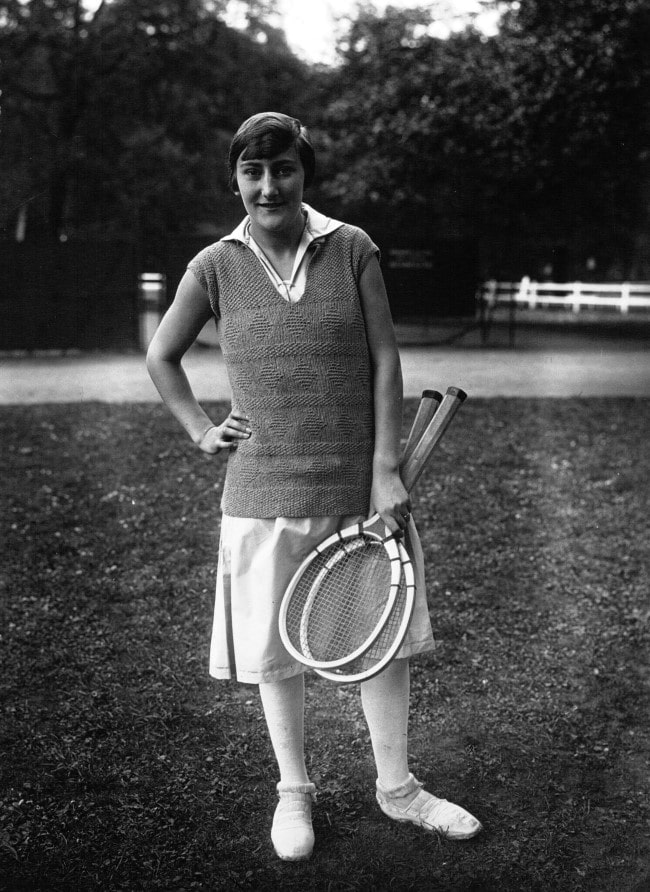
Simonne Mathieu in 1926 (C) Agence Meurisse, Public Domain
The court’s namesake, Simonne Mathieu, is an important yet forgotten figure of women’s tennis who won 13 Grand Slam titles throughout her international career. She was born in Neuilly-sur-Seine in 1908 and began playing tennis as a teenager. Thanks to her formidable forehand and incredible determination, she began winning tournaments and debuted at Roland Garros in 1925. Despite reaching the finals on six different occasions, it wasn’t until 1938, having had two children, that she finally and remarkably won the women’s singles, the women’s doubles and the mixed doubles tournaments in the same year!
When the Second World War interrupted her tennis career, she began her military career, joining the Resistance alongside General de Gaulle in London and commanding one of the first women’s auxiliary units. Upon her return to France in 1944, she had risen to the grade of captain in the Free French Forces and proudly worn her uniform while umpiring matches held at Roland Garros that year. After receiving the Légion d’Honneur and retiring from competitive tennis, her passion and dedication to this sport did not cease. She was the captain of the French Women’s tennis team for 12 years as well as working in the Committees Branch of the French Tennis Federation. Her nephew and great-grandson were present at the opening match in 2019 alongside the Mayor of Paris Anne Hidalgo and the former President of France Nicloas Sarkozy.
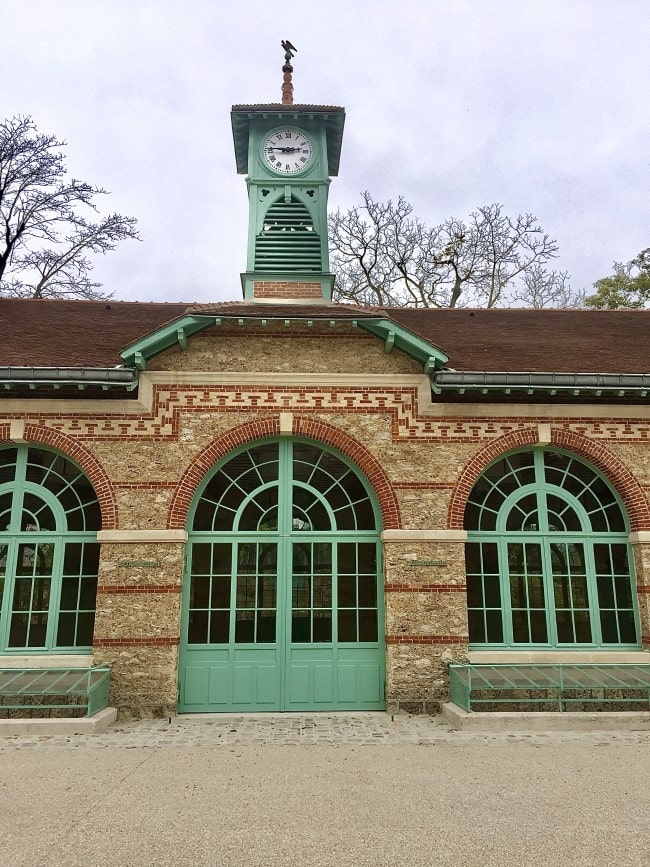
This 19th century building has been refurbished by the French Tennis Federation and is used as a restaurant during the French Open. (C) Amy Kupec-Larue
The four sides of this new greenhouse have been designed as botanical landscapes, housing plants from four continents and inviting visitors on a trip around the world in less than one hour. Plants from Australia grace the northern side of the tennis court, Asian plants to the east, the flora of Africa faces south and South America species are looking to the west. Within each continent, a variety of ecosystems have been created, ranging from arid, desert-like conditions to humid rainforests with endangered species. Over 500 different species have now become established, 80 of which were chosen to illustrate their culinary, medicinal, spiritual, or industrial uses while highlighting our absolute dependence on plants and the importance of protecting their environments. The selection of 80 plants from around the world is also a nod to the French novelist and poet Jules Verne, who wrote Around the World in 80 Days and lived in the village of Auteuil before it was annexed to Paris.
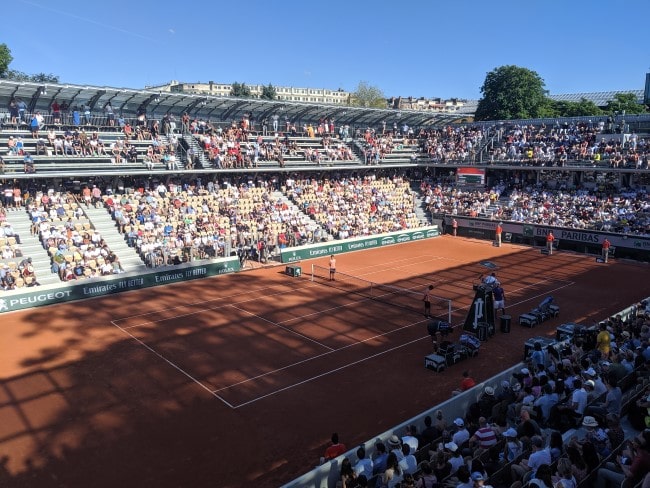
Simonne Mathieu Court (C) Unknown author, CC BY-SA 4.0
The plants were sourced from three locations; many came from the existing, onsite collections at Auteuil, others were exchanged within a network of botanical gardens as well as a few select nurseries throughout Europe. There have also been several exceptional donations from passionate collectors including a Madagascar cycad, which can be found in the African greenhouse and a Neomoorea orchid, the only known species in its genus in the South American greenhouse.
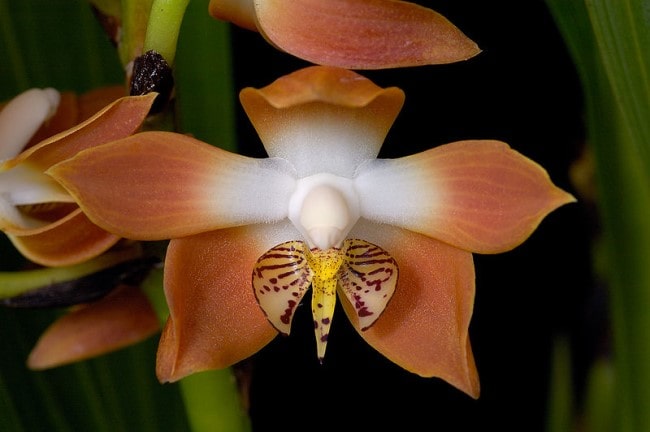
Neomoorea irrorata (C) Eric Hunt, CC BY-SA 3.0
Twelve entrances allow you to begin your promenade in any direction, just be sure to close the doors behind you as you pass through the different continents so as to maintain the proper levels of humidity. A tunnel of tropical vines welcome you into the Asian greenhouse alongside a manmade cascade and stream. The sublime scents of the ylang-ylang blossoms and sweet smelling wax flowers embalm the air around the Asian potager where you will find a Ceylon cinnamon tree, Chinese mustard greens, Chinese cabbage, and Thai basil. The forest of mango and banana plants flourishing beside shale stones adorned with epiphyte orchids may even transport you briefly to the mountains of the Yunnan province…
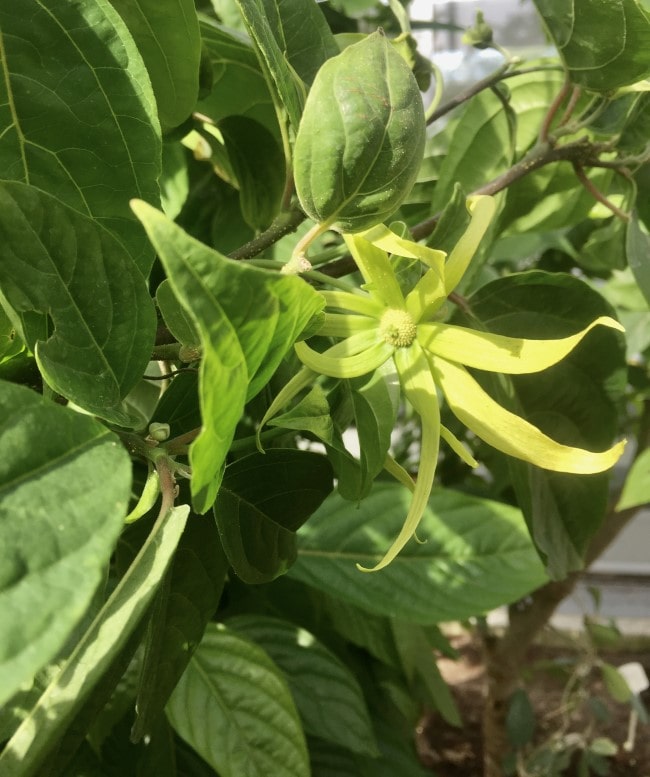
Ylang-ylang’s fragrant flower clusters are just one of the scents which embalm the Asian greenhouse. (C) Amy Kupec-Larue
The African portion is equally exotic with a peacock flower from Madagascar, a grenadilla blackwood tree from Mozambique and a pencil tree from Ghana. The central section is devoted to an interesting collections of coffee species, the importance of the Palaver Tree in community life, and the consequences of the controversial palm tree.
Stepping into tropical and subtropical South America greenhouses you will find a host of emblematic trees used for their medical properties and important food sources. The edible tuberous roots of the graceful cassava shrub are the third most important source of carbohydrates in the tropical world. Growing right next to it is a cacao tree whose beans give us cocoa solids, butter and chocolate. An miniature orchid collection and exuberant climbing vines display the adaptability of plants to their environment.
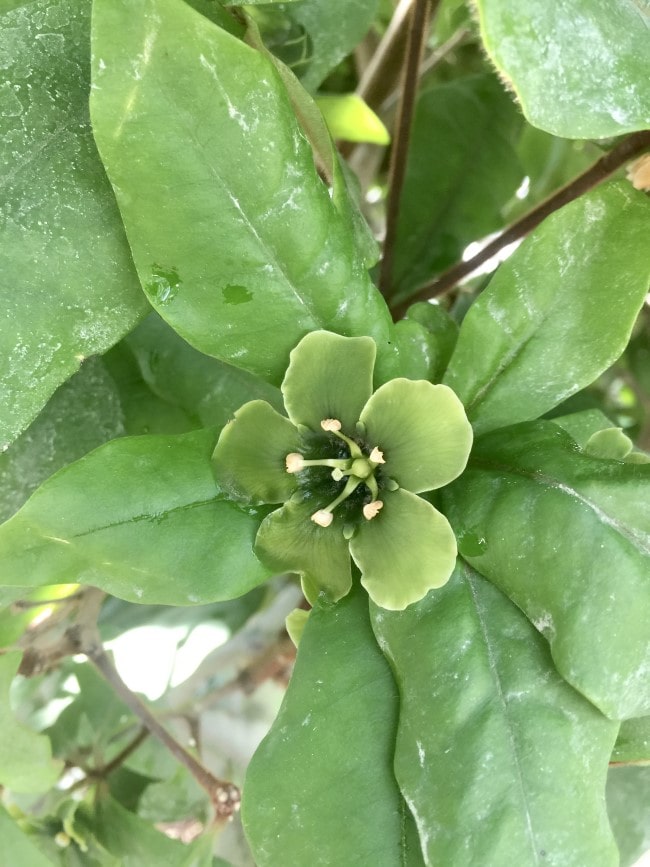
Deherainia smaragdina is indigenous to Mexico and a member of the primrose family. These remarkable green flowers actually smell like rotting meat so as to attract the insects that normally pollinate it. (C) Amy Kupec-Larue
The Australian continent offers new horizons and incredible diversity with many plants used by the indigenous Aboriginal peoples. The remarkable grass tree can survive brush fires and takes several years to flower, producing a 9-foot spear-like stem which is covered in blossoms. The small collection of carnivorous plants should not be overlooked as you step through the tropical rain forest ambiance which evokes Queensland.
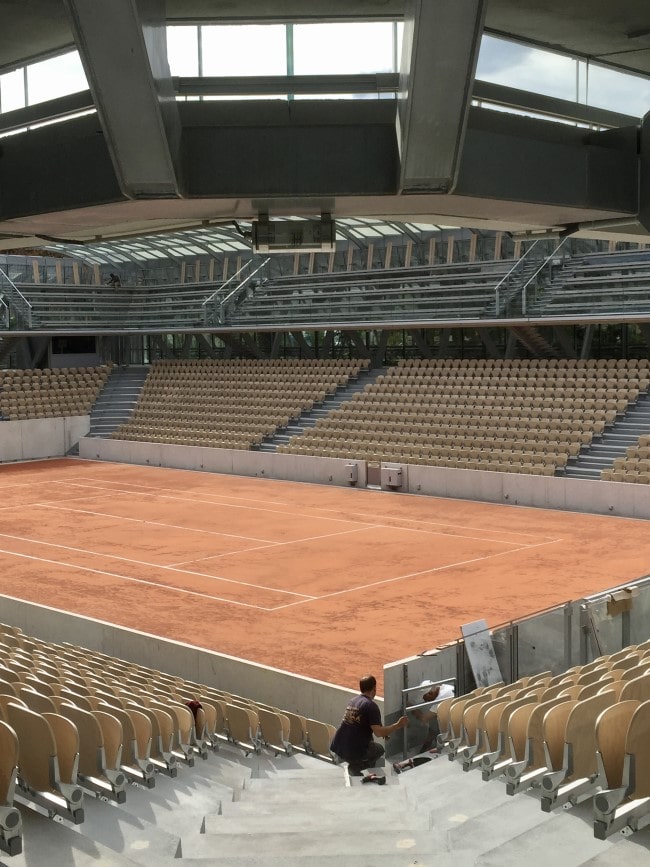
Simonne-Mathieu tennis court at Roland Garros, where the French Open is played. (C) Amy Kupec-Larue
While the technical elements of the greenhouses are quite present at this early stage, the continued growth and development of the plants will provide an unique backdrop for this tennis court as well as an enchanting and educational escape for those who venture inside.
Here is a time-lapsed recording, allowing you to watch the construction of the tennis court, from the official Roland Garros website. Unfortunately it does not show the planting of the greenhouses!
Lead photo credit : The plants in the Australian greenhouse represent three different biotopes from this continent. (C) Amy Kupec-Larue
Source :bonjourparis.com
